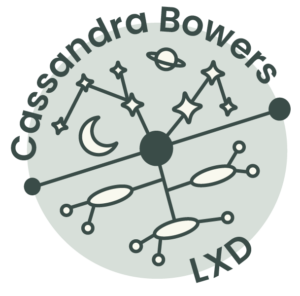Accessibility
Integrated // Equitable // Appreciative
A few years ago, I was at the library, searching for a new book to read with my adult student to practice using his speech-generating device.
One book was about the first day of kindergarten. Another was focused on learning to count using cartoon mice. Another one had a more interesting story and followed a knight’s journey, but it used complicated figurative language. In the end, I chose the one about counting mice.
When looking for books and other educational resources while teaching students with autism, I have almost always been disappointed with what is available. This is even more true for my older students, many of whom continue to learn from resources aimed at children. Though their reading comprehension and verbal skills may not be as advanced, they are still adults grappling with issues like their work life, grieving losses, mental and physical health, and navigating social relationships with friends, family, and romantic partners.
Because of limitations in what is easily accessible, I have frequently ended up creating my own learning materials.
“Just as traffic lights need to be designed to be heard as well as seen, to improve their access to the blind as well as deaf pedestrians,
we can imaginatively consider all parts of our environment, both social and physical, to make it equally accessible to a diverse range of neurologies.
– Neuroethics of Neurodiversity
Let's Define Accessibility!
Accessibility is:
- Can participate fully in the learning experience
- Have equitable opportunities to learn
- Are integrated effectively into the learning experience
- Are provided with safe avenues to advocate for their needs
Accessibility is not:
- Cannot access pieces of the learning experience
- Have unseen and unacknowledged barriers to learning
- Are expected to adapt to others’ preferred methods of teaching and learning
- Do not feel comfortable speaking up for their needs
Why is accessibility important?
It is almost certainly impossible to accommodate every possible need of every potential learner in all educational contexts. However, I believe that designing learning experiences with diverse learners in mind makes the experience better for all learners.
A simple example: Providing closed-captioning for a video or a transcript for a podcast is most obviously useful for learners who are deaf or hard of hearing. I am not deaf or hard of hearing, but I am a visual thinker and frequently struggle to process audio information. So, while I don’t need closed-captions or transcripts to be able to participate at all, having them available still drastically improves my learning experience.
Many people’s strengths and needs in regards to learning fall within the neurotypical spectrum. However, every single learner has different strengths, needs, and preferences. Also, everyone has a unique life experience that they are bringing with them into the learning environment (culture, family structure, economic status, race, gender identity, sexuality, etc).
My approach to accessibility
I believe that every student can learn, if provided the right support. Figuring out what supports they need and how to provide those supports will sometimes be easy and at other times be incredibly difficult, depending on the individual and the context.
In my own design practice, I aim to:
- Provide as many choices as possible for how the learner can engage with the material and learning experience.
- Be flexible and creative when defining what success looks like.
- Provide opportunities for learners to ask for what they need and give feedback.
How can I make learning experiences more accessible?
Consider a wide range of potential learners. Some supports are easier for me to provide than others (e.g. writing a transcript or providing closed captioning vs. translating learning materials into multiple languages). While I will likely not be able to make every experience universally accessible, there may be creative ways to expand access (e.g. I can’t translate the text into multiple languages, but I can make a simpler version for English language learners).
Examine and attempt to set aside my own biases. While it’s not possible to completely set aside my own point of view and lived experience, it’s important to try.
Whenever possible, talk to learners about their strengths, needs, and preferences. Having an open and honest conversation with the actual intended audience is the best way to figure out what they want and need!
“The neurodiversity movement values human differences that have often been pathologized, underscores the strengths associated with each unique neurological design, and demonstrates how partnerships and teams that include neurodiverse individuals can enhance problem solving in a complex world. […]
The “unusual” 1st, 5th, or 10th grader in your classroom may not yet seem like the brilliant scientist or business owner who they might very well become, growing into a role that allows them to work closely with partners who complement their unique abilities.”
– Valuing Differences
